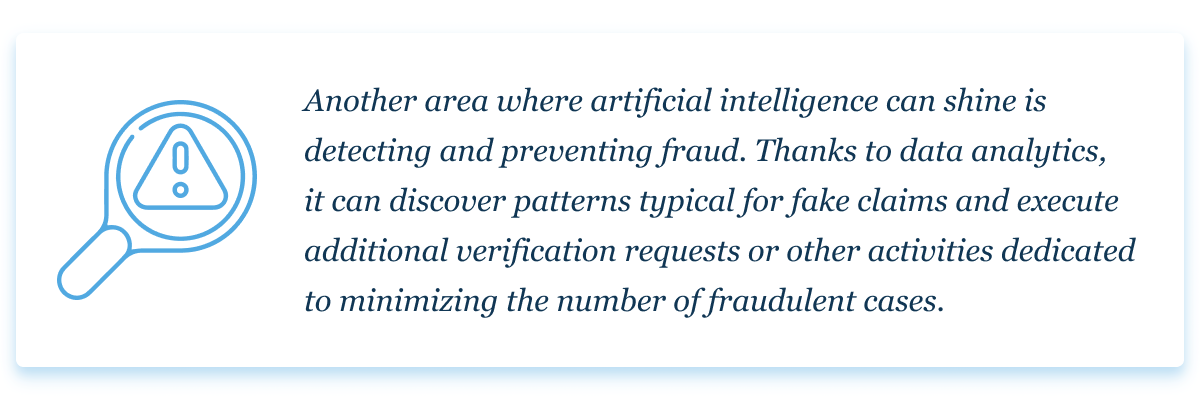The insurance sector is undergoing a digital revolution driven by artificial intelligence (AI). As AI transforms underwriting – the process of risk assessment and premium determination – debate rages around its merits and dangers.
Advocates highlight AI’s potential for greater efficiency, accuracy and fairness. Critics point to risks like bias, lack of transparency, and erosion of human discretion. It’s a complex issue with solid arguments on both sides.
In this 2000 word blog post, we’ll dive deep into the AI underwriting debate, exploring the pros and cons so you can make up your own mind.
The Underwriting Process and Role of AI
First, a quick primer on insurance underwriting and how AI is involved.
Underwriting is the process of evaluating risk to determine policy premiums. Basis the risk profile, underwriters decide whether to offer coverage, at what price, and under what terms.
AI is automating various underwriting tasks like data collection/analysis and risk scoring. Algorithms process volumes of data faster than humans, identifying patterns and insights.
AI can personalize pricing by considering non-traditional factors, while machine learning helps improve predictive accuracy over time.
Many view AI as integral for underwriters to handle mounting data sources, from medical records to social media, while increasing efficiency.

The Case for AI Underwriting – Where Algorithms Shine
AI brings some clear advantages to the underwriting process:
1. Speed and Efficiency
AI systems can ingest and process astronomical data volumes far faster than human teams. Machine learning algorithms continually improve, learning from new data.
By automating tedious manual tasks, AI systems enable underwriters to focus their expertise on complex customer evaluations and boundary cases. This is a huge efficiency gain for insurers.
2. Granular Risk Assessment
AI can paint uniquely detailed risk profiles for each customer by tapping unconventional data sources.
Beyond basics like age and location, algorithms can analyze shopping habits, social media posts, medical records, and even DNA profiles. This additional data, while raising privacy concerns, reduces information asymmetry between insurer and customer.
More granular and accurate risk scores enable fairer premiums aligned closely with likely claim payouts. For most individuals, AI underwriting should theoretically reduce costs.
3. Neutrality and Consistency
Unlike humans, algorithms are untainted by emotions or biases. An AI will evaluate the same risk factors the same way every single time. There is no randomness due to external factors like tiredness or irritation.
The neutrality and consistency of machine evaluations makes the underwriting process more standardized. Outcomes are based purely on data and logic, not inherent biases.
4. Round-the-Clock Processing
AI systems function tirelessly 24/7 without breaks. Customers can obtain policy quotes and underwriting decisions instantly any time, rather than waiting for human underwriting teams to get back.
The always-on availability also allows insurers to scale seamlessly during spikes in application volumes.
Criticisms and Challenges for AI Underwriting
Despite those advantages, experts and consumer advocates highlight major concerns around growing reliance on AI underwriting algorithms:
1. Bias and Discrimination Risks
While AI is free from human biases, algorithmic systems inherit any biases in the training data. Historical decisions and outcomes tainted by racism or sexism integrate into models.
Biased underwriting algorithms can discriminate against minorities and other protected groups, denying them affordable coverage.
Insurers must rigorously audit data and algorithms to ensure fairness across customer demographics. But preventing discrimination completely is challenging.
2. Lack of Transparency
Insurers consider their underwriting algorithms proprietary secrets providing a competitive edge. So the internal workings remain hidden away in black boxes.
Customers lack clarity on what exact factors determine their premiums and coverage eligibility. They can’t review or contest unfair evaluations.
Greater transparency is vital for establishing trust and giving customers recourse against incorrect or biased automated decisions.
3. Privacy and Security Risks
The wealth of customer data feeding AI underwriting systems creates enormous privacy risks if breached or misused.
Hackers could access medical histories, shopping habits, contact lists, posts, and behavioral profiles. Plus algorithms deducing sensitive details like sexual orientation or health disorders based on data correlations.
Stringent security protocols and data anonymization are critical to prevent unauthorized access. But risks can never be fully avoided.
4. Job Losses for Underwriters
As AI handles more underwriting tasks previously done manually, many human jobs are at risk. Junior underwriters and support staff doing routine data entry/analysis face displacement first.
While new hybrid roles leveraging both AI and human skills may develop, the overall headcount, especially in entry-level positions, will shrink. Displaced staff need robust retraining policies.
Managing this transition responsibly while minimizing hardship for impacted workers is crucial for insurers.
The Balanced Future: AI Assisting Underwriters
Rather than full automation, insurers are wise to adopt AI as an enhancement tool for human underwriters instead of as a replacement.
No algorithm can replicate the emotional intelligence, ethics, critical thinking, and contextual decision making of experienced professionals.
Underwriters remain essential for complex cases involving multiple disorders, unclear liability issues, suspected fraud, or sensitive disputes over claims settlement.
AI is unfit for such intricacies as well as situations seemingly meriting partial exceptions against standard risk protocols.
Only human underwriters have the holistic judgment and empathy needed in these common scenarios.
The future likely involves integrated human-AI underwriting teams. Algorithms handle huge data volumes, risk scoring, and routine applications. Underwriters apply contextual reasoning and emotional intelligence where required.
This balanced approach harnesses the precision of machines and wisdom of humans in a checks and balances framework. Neither is disposable.
With responsible AI adoption and fair protocol, both insurers and consumers stand to benefit tremendously.
















Add Comment